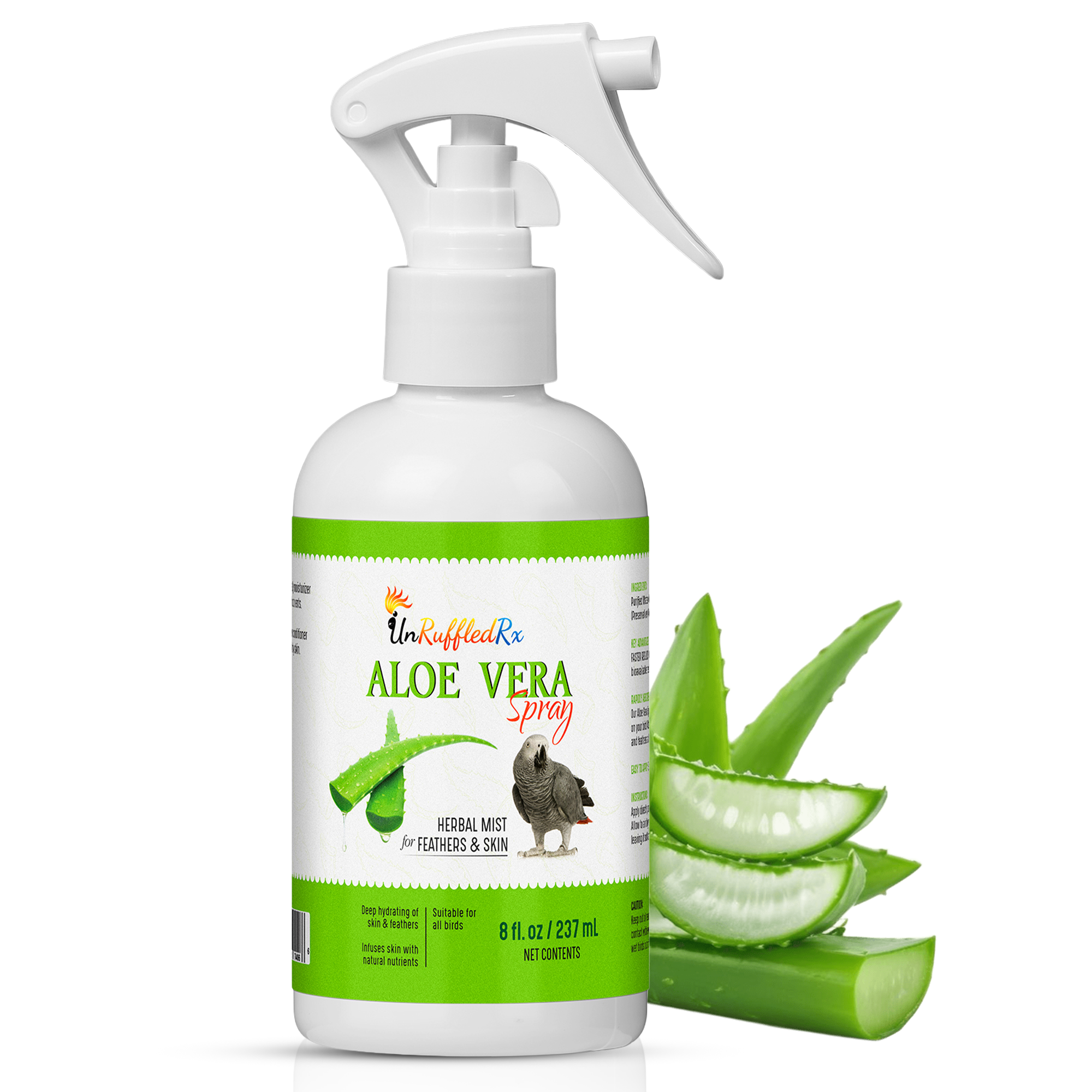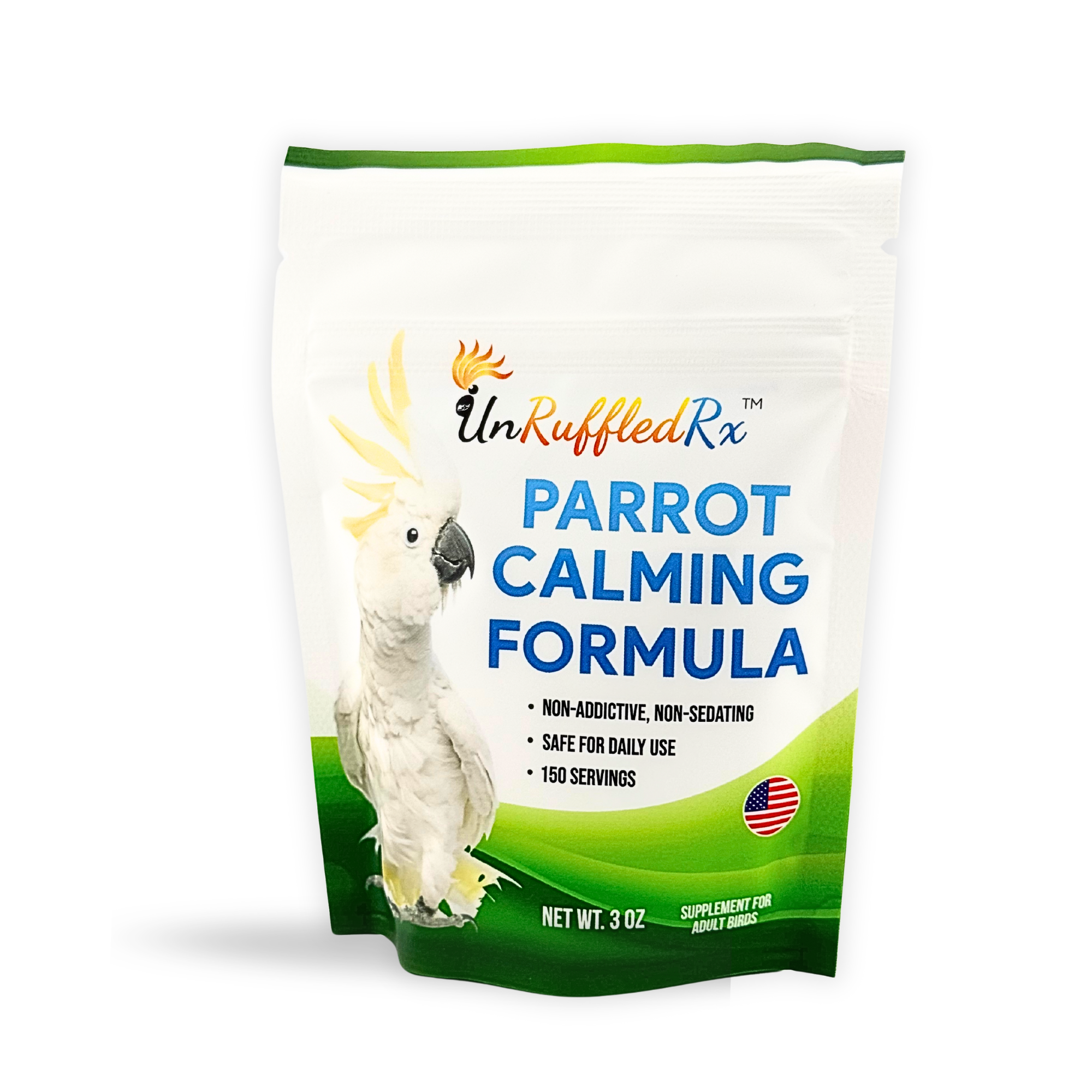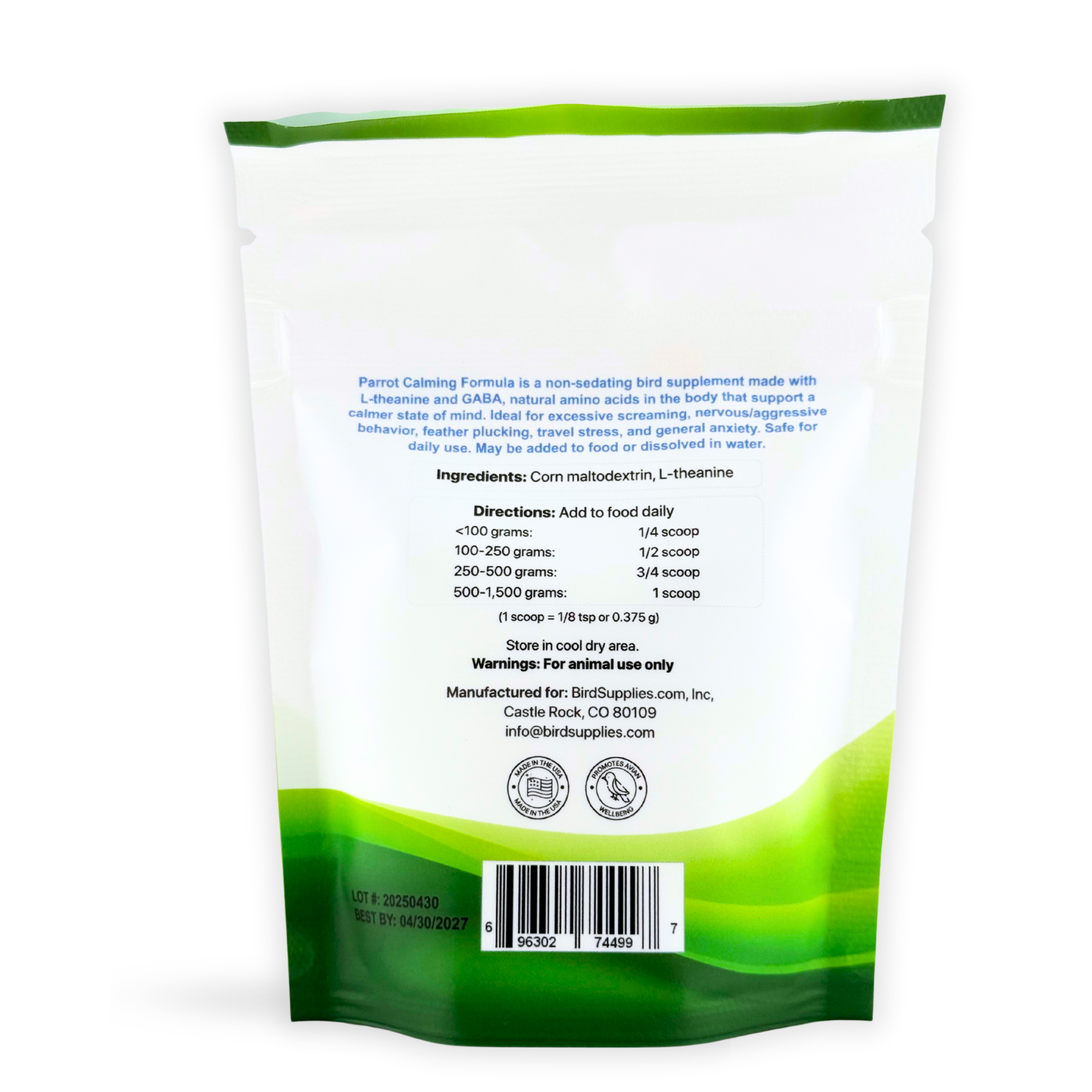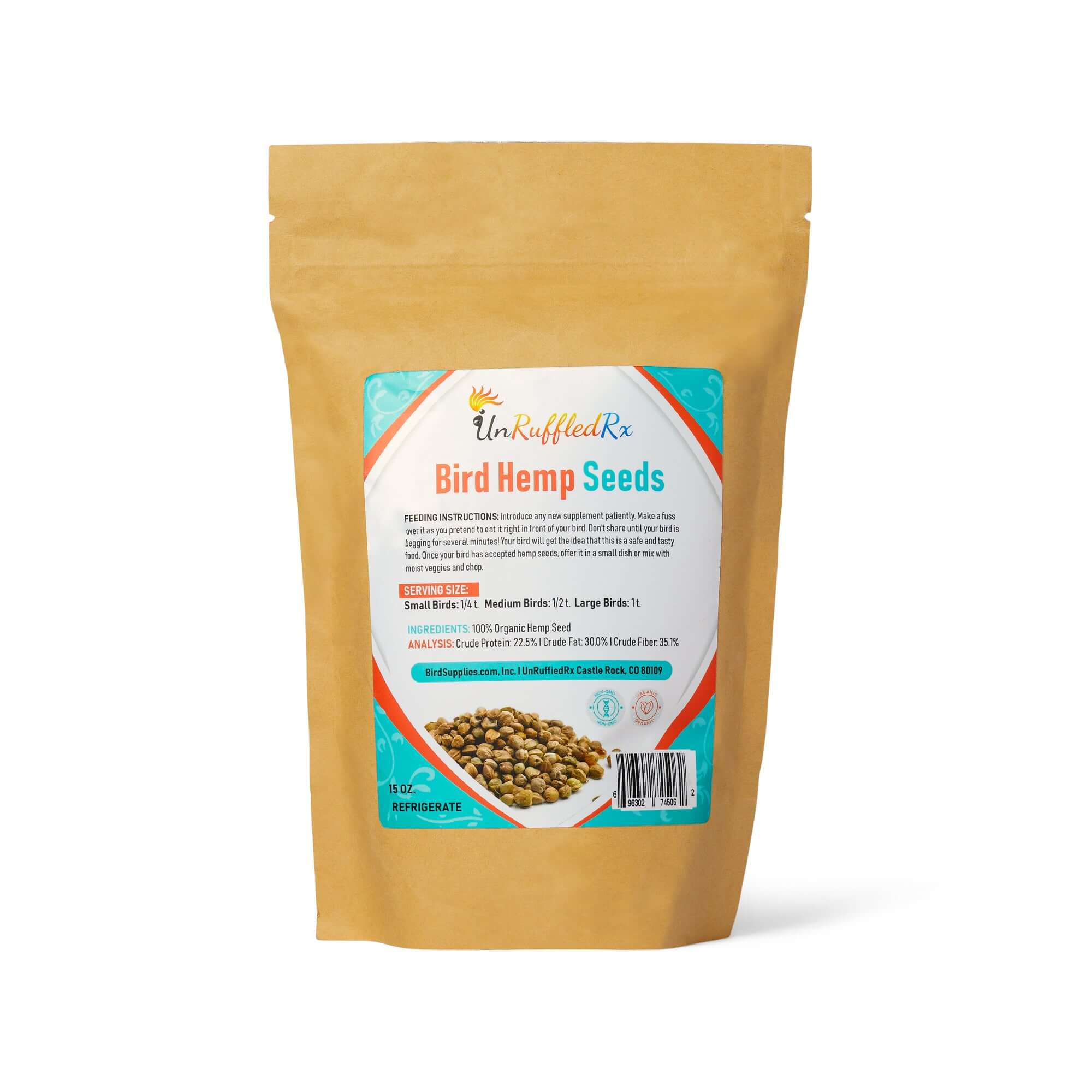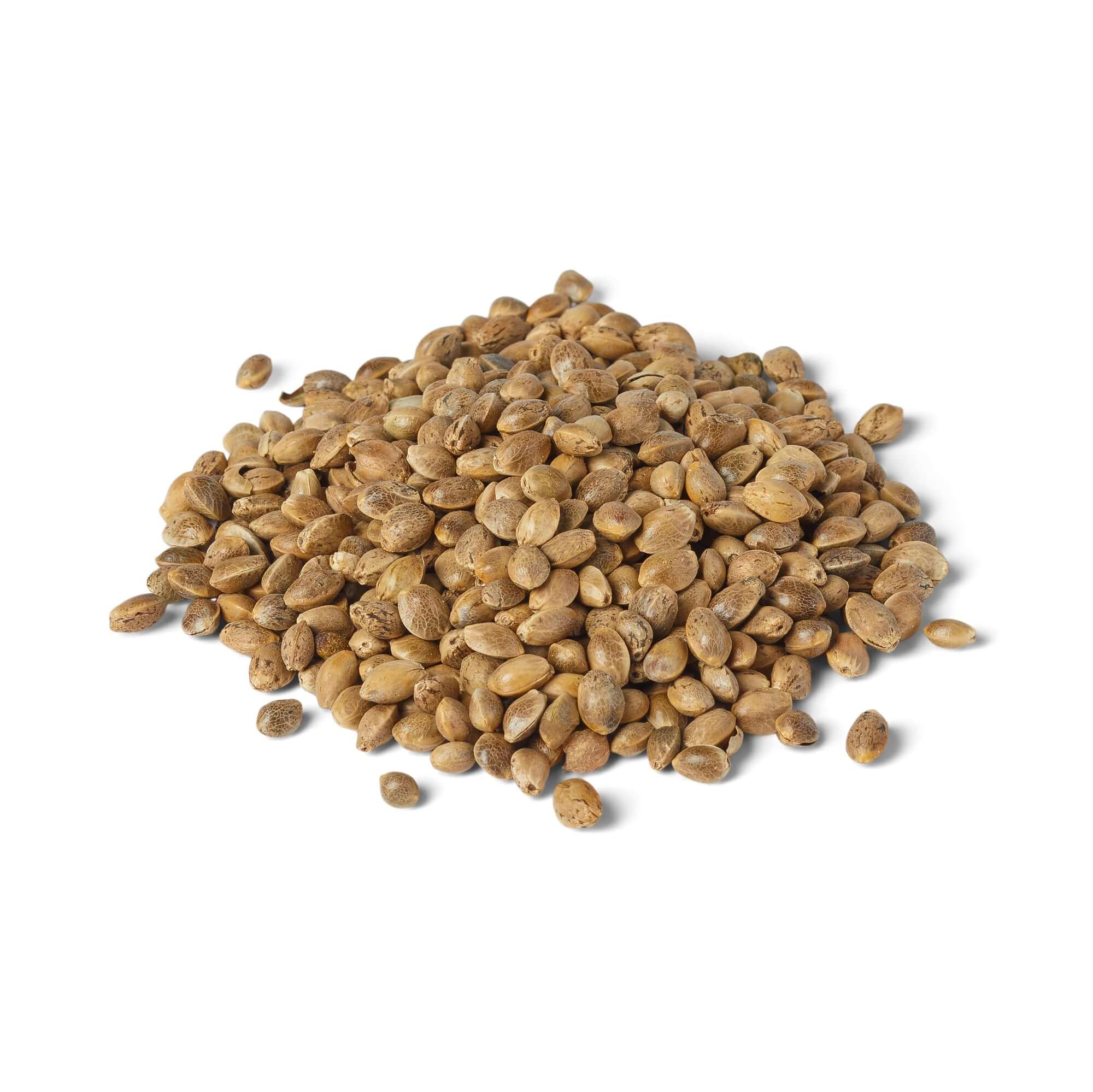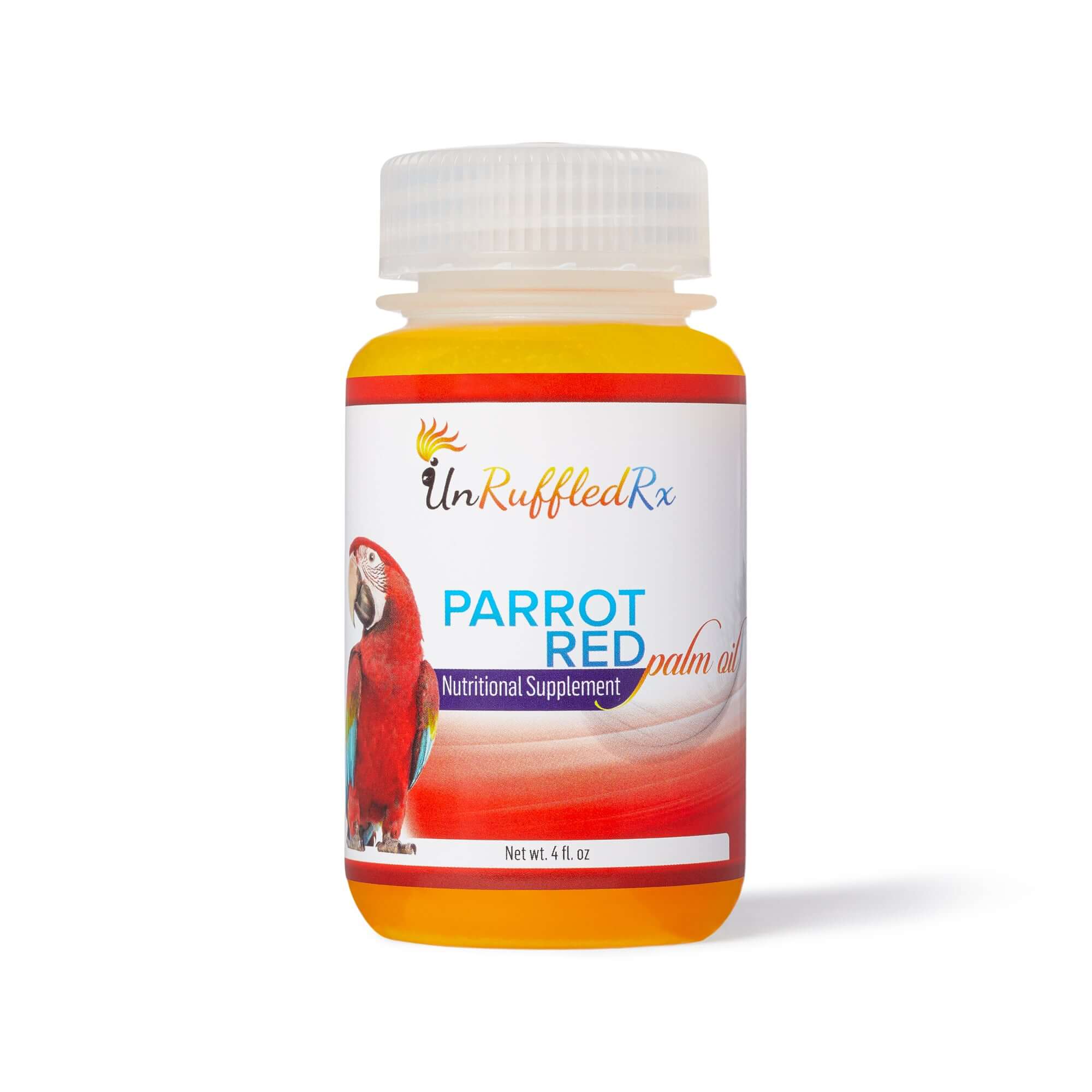Revised 10/26/2023
Table of Contents
- Grooming for Happy and Healthy Birds
- Safe Toweling Techniques for Birds
- Splish-Splash: Bird Bathing 101
- Wing Trimming: Is It Right for Your Bird?
- The Importance of Caring for Blood Feathers
- Maintaining Beak and Nail Health
Hello to all the dedicated pet bird enthusiasts out there! We understand the deep affection you have for your feathered companions and let's face it, they truly are remarkable creatures. However, similar to the care we provide ourselves, our beloved feathered friends also require some tender love and attention when it comes to bird grooming.
Now, why is grooming such a critical aspect of avian care, you might ask? Well, picture this: if you were to skip showering, haircuts, or foot hygiene for an extended period, you'd likely feel far from your best, wouldn't you?
Pet birds aren't too different in that respect. Neglecting their grooming needs can lead to undesirable consequences, including feather plucking, health complications, and general discomfort.
But worry not, because, in this blog post, we're delving into the fascinating world of how to groom your bird. We'll explore the whys and how-tos of keeping your avian companions clean, healthy, and content. So, let's embark on the journey to ensure your pet bird's ultimate well-being and happiness. 🦜💖
Grooming for Happy and Healthy Birds
Grooming your feathered friend is crucial for their well-being. However, it an be stressful for anxious birds or those that haven't been trained that the procedures can be painless.
Let's dive into the five key aspects of avian grooming that will keep your bird healthy and happy. But, first, if your bird is anxious, consider a safe bird calming supplement like Parrot Calming Formula.
1. Safely Toweling Your Bird for Grooming:
Toweling your bird might sound a bit unusual, but it's a vital skill. Whether it's for routine check-ins or vet checkups, birds that have been trained to tolerate safe toweling experience reduced stress. By the way, you'll probably feel better about bird grooming and vet exams, too!2. Trimming Flight Feathers:
Deciding whether to trim your bird's flight feathers is a big deal. Most birds enjoy a bit of fluttering around, but pet parents (and, some avian vets) might be worried about accidents. Trimming should be done with utmost care, ensuring you don't cut too much off of each feather or too many feathers, as flight feathers will grow back only during the bi-annual molt.3. Caring for Tender Blood Feathers:
Blood feathers are a bit like fragile, newborn feathers. They contain an essential blood supply needed for feather growth. But, if one breaks, it can result in dangerous bleeding. Knowing how to handle these delicate situations is crucial.4. Routine Bathing:
Regular baths are not just for keeping your bird's feathers clean; they are about skin health and promoting healthy preening! It's like a spa day for them, it makes them feel good. That is if you take the time to train them to feel okay about it.5. Maintaining Beak and Nails:
Birds use their beaks for various tasks, so ensuring it's well-maintained is essential. Beak overgrowth can lead to issues with eating, play, and preening. Nails, on the other hand, can get too long and potentially injure your bird's foot joints or even yourself during handling.Grooming your bird in these five areas is like giving them the VIP 🦜 (very important parrot) 🦜 treatment, making sure they're safe, healthy, and always looking their finest. Plus, it's a fantastic way to strengthen your bond and ensure your bird remains a joyful member of your family. 🦜💅✂️🛁

Safe Toweling Techniques for Birds
Grooming your parrot can be a breeze once you've got the hang of it, but there are a few catches that you must know about.
- Those beaks can be nippy!
- Birds have fragile bones.
- Birds have half a dozen air-sacs around their body that need protection!
So, you have to be trained in how to towel your bird safely. One of the dangers is holding your bird too tightly, which can lead to damaging their air sacs or breaking a bone. We definitely don't want that! So, if you're not entirely confident, it's best to leave it to the professionals or ask your vet to train you.
PRO TIP:
Before you dive into the world of parrot grooming, consider towel training your feathered buddy. Towel training is a game-changer for those trips to the vet. Trust me, when emergencies strike, that towel training might just be the superhero cape your parrot needs to save the day.
On top of that, if you ever need to evacuate your home due to fires, flooding, hurricanes, or another reason - it is so important that you can catch and crate your bird quickly. Trust me! Living near the mountains I have had to evacuate a few times.
In terms of bird grooming, you'll find yourself towel-wrapping your parrot for essential tasks like toenail trims, beak maintenance, and feeling its keel bone so you can assess if it is a healthy weight.
So, here are my tips to make your bird feel safe and confident with toweling:

Photo Credit: Diane Burroughs, BirdSupplies.com
How To Towel Train Your Bird
Materials Needed:
Clicker
- Develop the mindset that baby steps will help you make progress much faster. Treat and reward baby steps related to any attempt your bird shows comfort around the towel and how long it will sustain that comfort level.
-
Purchase a solid-colored bath-sized terry towel, preferably in a calming color. This is your bird's towel that it will come to associate with grooming, handling, vet trips, and you providing it safety.
-
Teach your bird the word "towel" for the actual towel. Show the towel from a safe distance and say "Towel!” Put the towel on your body and act like you love it! Every time your bird shows an interest, click and treat.
-
After your bird has gained a sense of safety when the towel is nearby, try draping a portion of the towel over yourself and eventually over the cage. Reward your bird for investigating the towel. The investigation stage of training is essential for your bird’s psychological comfort.
-
Lay the towel on a bed or other flat surface that your bird is used to and scatter some of your bird’s favorite toys and treats on it. Treat and praise your bird as it demonstrates progressively more comfort around the towel.
-
Always make sure that your bird associates the towel with bonding. Play "Peek-A-Boo" or other games and make training fun for you, too!
-
Once your bird is comfortable standing on the towel, try slowly curling up the sides and encircling it. Keep all training fun and upbeat. Take things slow and always reward all calm behavior. If your bird becomes frightened slow the training down. It's so important that your bird never becomes frightened of the towel.
-
Always approach your bird from the front and remain cheerful and calm. Never use the towel as punishment.
-
Bring the towel up, over and around your bird.
-
's head by holding it along its jawline and letting the body rest on your palm. Never encircle the entire neck and never constrict the chest.
-
Talk in a gentle voice telling your bird what you'll be doing and offering encouragement and praise.
-
Gently pull the body part that needs grooming out of the towel and carefully groom your parrot.
Again, reward your bird all throughout the process.
- Watch for your bird getting its toenails stuck in the fabric.
Splish-Splash: Bird Bathing 101

Photo Credit: Diane Burroughs, BirdSupplies.com
Bathing your parrot is not just a luxury; it's a necessity to keep your feathered friend happy and healthy. Even during the winter, when it's chilly, our birds still need frequent baths. Just make sure that they don't get chilled. And, don't bathe in the evening before bedtime.
Bathing does wonders for your bird's well-being. It helps clean off dead skin cells, debris from their feathers, like the oils on our skin, dust from the air, and any lurking bacteria. Plus, it promotes proper preening and feather realignment, ensuring your parrot's plumage stays in tip-top condition. What's more, it moisturizes their skin, preventing it from becoming dry and uncomfortable.
Now, let's talk about three popular bird bathing methods. Firstly, you can put a shallow bowl of lukewarm water in your parrot's cage. Many smaller birds enjoy splashing around and having a good time in their personal birdie pool.
Second, you can gently mist your bird with a fine spray of lukewarm water. Make sure they're comfortable with it and not getting too wet, but this can mimic the gentle rainforest drizzles they love.
And third, consider getting a special shower perch for your parrot. This allows them to join you in the bathroom, where they can enjoy a misty shower without getting too wet. The key is to find the method that your bird loves most, ensuring they stay clean, happy, and healthy.
Bird Wing Trimming
Trimming a bird's flight feathers is a controversial topic in the world of avian care, but it's essential to remember that responsible choices can be made to ensure both your pet's safety and happiness. Many avian vets won't judge you for opting to clip your bird's flight feathers, considering the numerous accidents they often see.
While it is an individual owner’s choice whether to trim flight feathers, we at the Veterinary Center for Birds and Exotics promote wing trims due to the number of accidents we see in captive flighted birds. First and foremost is safety., follow these steps:
The Right Way for Clipping Bird Wings
1. Towel Your Bird: Begin by gently and securely toweling your bird to keep them calm and still. This is crucial to prevent any sudden movements during the grooming process.
2. Examine for Blood Feathers: Carefully examine the wings to ensure there are no emerging blood feathers. These are feathers with an active blood supply and should never be cut.
3. Start with 3-4 Feathers on Each Side: To avoid causing too much stress to your bird, it's recommended to start with trimming 3-4 feathers on each side. This allows your bird to have some control over their descent, preventing injuries. If you need to, you can always trim more.
4. The Right Length: When trimming, ensure that you cut the feathers just enough to prevent your bird from achieving full flight, but not so short that they can't glide down safely. The ideal length typically leaves the feathers about 1-2 inches long.

Now, let's weigh the pros and cons of trimming your bird's flight feathers:
PROS |
CONS |
| ✔️ If done correctly, may keep the bird safer so they can't fly into ceiling fans, windows, etc. | ✖️ Improper trimmings cause of painful, traumatic injuries when the bird gets frightened and attempts flight, but instead falls hard on the floor. |
| ✔️ Some birds are calmer with trimmed wings because they are more dependent on their owner. | ✖️ Most birds are traumatized both physically and emotionally when they can't fly |
| ✔️ May be helpful during training and socializing as the bird can't easily fly off. | ✖️ Feather plucking or vocalizing loudly may become more common in birds when they perceive limited control over their surroundings and mobility. |
| ✔️ Birds can often play on their bird stands more safely. | ✖️ Flight is an important form of exercise for birds |
| ✖️ Clipping the feathers throws the bird off balance and forces an unnatural posture which can induce arthritis later in life. |
The Importance of Caring for Blood Feathers
Caring for tender blood feathers is one of those essential skills that every responsible bird owner should have in their toolkit. These delicate feathers are like brand-new baby feathers, and they come complete with a blood supply. Think of them as the life force behind your bird's beautiful plumage. But, here's the thing, accidents can happen. If one of these blood feathers gets damaged or breaks, it can lead to some worrisome bleeding. That's where you step in as the hero, much like a family medic, ready to provide the necessary first aid and save the day.
So, picture this: you're there, bonding with your feathered friend, when suddenly you notice a blood feather issue. It's not as daunting as it may seem. All you need is some quick thinking and a few supplies, just like any first-aid superhero. The first step is to remain calm – birds are sensitive to our emotions, so being cool as a cucumber is your superpower here.
Now, imagine you're carefully holding your bird and examining the feather that's causing trouble. It's like being a detective, only with feathers instead of a magnifying glass. You'll gently grasp the damaged feather close to the base, right where it enters the skin. This is where you'll find the bleeding source. Your next move is to apply a bit of pressure to stop the bleeding. Think of it as pressing a bandage on a cut; it's that simple!
In some cases, just by applying some pressure, the bleeding will stop, and your bird will be on the mend. However, if the bleeding persists, it might be time to reach out to an avian veterinarian. Much like how a doctor steps in when needed, a vet can provide the necessary care to ensure your feathered friend is back to their chirpy self in no time.
So, there you have it – the art of handling tender blood feathers is a bit like becoming the family medic for your avian buddy. It's a skill that can save the day and keep your feathered companion in tip-top shape. Remember, with some confidence and a calm demeanor, you've got this, and your bird will thank you for it! 🦜👩⚕️🩹

Maintaining Beak and Nail Health
Maintaining your bird's nails at the correct length is crucial for their comfort.
For its nails, think of it like our own toenails – if they grow too long, they might rub uncomfortably against the insides of our shoes, causing pain. In a similar way, when your bird's nails get too lengthy, they struggle to grip their perch properly, which can place unnecessary stress on their foot joints. Additionally, those overgrown nails might become sharp and uncomfortable, making it a bit of a prickly experience when you reach out to pick up your feathered friend.

If your bird's beak gets too long, it makes it difficult to eat. Also, preening is affected and so is simply playing with toys If the top part is too long, your bird can't properly grind down pellets or crack open nuts.
Your birds beak has a lot of nerves in it to test out texture of items, sense temperature, and feel pain. Often, you simply need to file down the sharp tip.However, if your birds beak continuously grows too long, get a vet check as it could be a sign of liver problems.
When it comes to pet bird nail and beak care, understanding the basics is key to keeping your feathered friend comfortable and happy. First, let's delve into the structure of bird nails and the beak. Both, consist of two main parts: the hard outer shell and the sensitive inner part known as the "quick." This quick houses blood vessels and nerves, making it essential to avoid cutting during grooming.
Now, let's talk tools. There are two common options for keeping those nails in check: traditional blade-style pet nail trimmers and grinders.
Traditional Blade-Style Pet Nail Trimmers:
These nail trimmers work much like a tiny guillotine, cleanly snipping off the pointed tip of the nail. They are quick and straightforward to use, making them a popular choice for many bird owners. However, there are a few cons to consider. If you're not careful, you may accidentally cut into the quick, causing bleeding and discomfort for your bird. So, steady hands and a cautious approach are a must.Grinders:
Grinders are another tool used for bird nail care. These gadgets gently file down the nail's length, reducing the chances of cutting into the quick. Grinders have the advantage of cauterizing the quick as they work, which can be less painful if done correctly. However, they require more patience. If your bird's nails are significantly overgrown, it may take some time and multiple sessions to get them down to the appropriate length.
So, whether you opt for traditional trimmers or grinders, the key to successful grooming is a gentle touch and a keen eye. By being attentive and cautious, you can ensure that your pet bird's nails and bek remain comfortable and at the perfect length.
In conclusion...
In this post about pet bird grooming, it's evident that proper care is not only vital but also a way to demonstrate our love for these feathery companions. Throughout these discussions, we've explored five key areas: safe toweling, feather trimming, blood feather care, routine bathing, and beak and nail maintenance.
In the end, grooming is a way to pamper our feathered friends and show them our love. It's like giving them a spa day, ensuring their happiness and health, while our bond with them grows stronger with each joyful chirp. 🦜💅✂️🩹
Related Posts:
How To Give A Parrot A Bath
How To Towel Train A Bird
References:
1. Veterinary Center for Birds and Exotics.Trimming Flight Feathers. Don't Just Wing it! https://avianexoticsvet.com/blog/trimming-flight-feathers-dont-just-wing-it/
2. Clipping is not necessary to keep birds safe around the house! References: Speer, B., 2015. Current Therapy in Avian Medicine and Surgery. Elsevier Health Sciences, p. 694. https://books.google.com/books?id=LKY_CwAAQBAJ
3. Jenkins, J.R., 2001. Feather picking and self-mutilation in psittacine birds. Veterinary clinics of North America: Exotic animal practice, 4(3), pp.651-667. https://www.sciencedirect.com/science/article/abs/pii/S1094919417300294
4. Rubinstein, J. and Lightfoot, T., 2012. Feather loss and feather destructive behavior in pet birds. Journal of exotic pet medicine, 21(3), pp.219-234. https://www.vetexotic.theclinics.com/article/S1094-9194(13)00089-3/pdf
5. Kubiak, M., 2015. Feather plucking in parrots. In Practice, 37(2), pp.87-95. https://inpractice.bmj.com/content/37/2/87
Link to this blog
Diane Burroughs, LCSW is a licensed psychotherapist trained in ABA therapy techniques. She specializes in avian anxiety disorders and is certified in Nutrition For Mental Health. Diane has written a number of bird behavior books and she offers behavior consultations. She's developed a range of UnRuffledRx Science-backed Parrot Wellness Supplies.
Diane's products have been featured in the Journal of Avian Medicine and Surgery and at Exoticscon, a conference for exotic pet veterinarians. Her bird collars & supplements are stocked in avian vet clinics and bird stores throughout the US. With over 30 years in the field of behavior, Diane has created thousands of successful individualized behavior plans that help pets thrive.
TAGS: #BirdGrooming #FeatherPluckingPrevention #FeatherCare
SHARING IS CARING! PLEASE SHARE ON YOUR FAVORITE SOCIAL MEDIA NOW!






